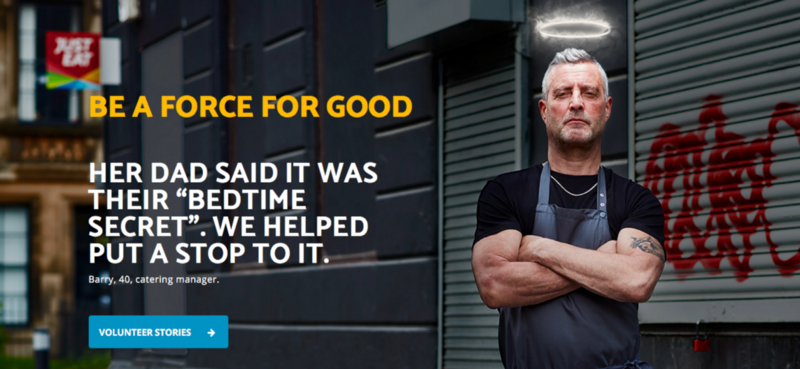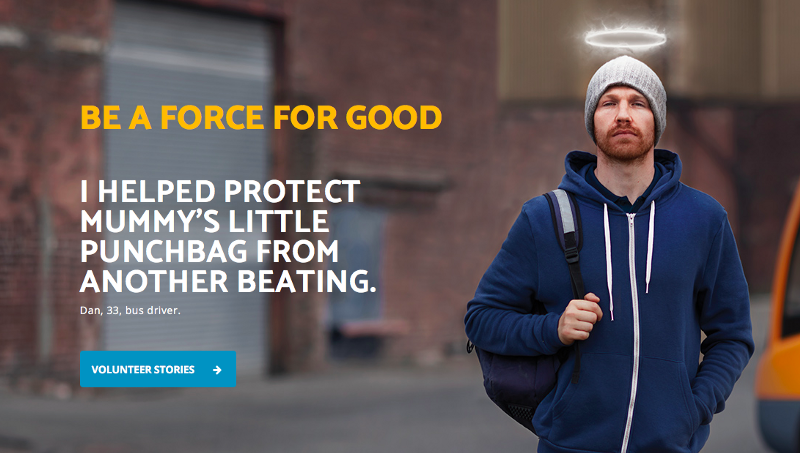"Mummy’s Little Punchbag"
Topic: Adoption, Child protection, Children's hearings system, Foster care, Local authority, Looked after at home, Permanence, Residential care, Voices of young people
Author: Kenny Murray
A version of this blog post was first published on Medium on 16 August and has been reproduced here with permission from Kenny Murray.
Advertising is a hard business nowadays. With attention spans out the window & newspaper sales on decline you have mere moments in 2018 to capture someone’s attention. Often as they rush through the street or swipe manically through their social media feeds. To get someone’s attention today, you often have to grab it.
The advert needs to carve through the mind of the reader, like a hot knife through butter. It has to be almost instantaneous. If it doesn’t, it’s commonly accepted in the industry that you’ve failed.
Hard enough when you’re advertising mouthwatering food or thirst quenching soft drinks. Harder still when you’re trying to encourage some form of social action.
Food and drink marketing doesn’t really affect the personal lives of anyone. It’s meant to be impersonal so that as many people as possible can identify with it.
Advertising as a form of driving social action doesn’t follow that logic.
It’s built around grabbing people’s interest. In as personal a way as possible. You need to motivate individuals using their own values and sense of self. That’s how you drive social action in advertising. I know, I’ve been in the industry.
It’s commonly accepted nowadays that you should never show children as victims in advertising. It’s crass. It borders on victim blaming. So then, how do you motivate that change when you can’t show children? It’s a challenge.
This is the challenge that the Children’s Hearings Scotland campaign has come up against.
The advertising agency in question, seems to think they’ve cracked it.


“Mummy’s little punchbag”
“Bedtime secret"
These adverts are built to directly target people across Scotland. The full series plays host to, a bus driver, a Leisure Assistant (or student if you look at the image alt text), a customer adviser or a Catering Manager. They are individuals you’ll see all across Scotland. They are a variety of ages. They are ethnically diverse.
They tick all the boxes if you’re looking to reach a diverse an audience as possible.
The words though. Those knife searing through hot butter sentences. They sear a bit too hot for me.
I can almost see the scene now. It’s a trendy advertising agency. They’re sat around a boardroom table. Brainstorming. They need to keep the client happy — but they also have their eye on the end of season awards. This work needs to motivate change but be exciting enough to stimulate conversation at whatever dinner parties they may find themselves at.
I’ve found myself in that scene.
I’ve also found myself in a Children’s Hearing. Through no fault of my own. I wasn’t being belted by Mummy. I didn’t have a bedtime secret. No doubt, some of those situations are playing out in homes across Scotland but they weren’t in mine.
I found myself as part of a Children’s Hearing because I was part of a household in which my Mum was struggling. She was struggling to keep a household of five children as a single parent whilst dealing with her own troubles in life. Decisions were made by members of these hearings. One of these meant we were placed in the care of the state. It’s a monumentally huge decision that affects the lives of everyone in a family. Particularly the child the decision is being made about. It did for me and my four siblings. We were separated and sent across the country to live with a different series of strangers.
The Children’s Hearings System in Scotland is an important one. They sum it up well theirselves.
“We exist to help protect the safety and wellbeing of vulnerable children and young people in Scotland.”
However, these adverts place societal stigma and judgement against parents who somehow find their family life in front of a children’s panel. When you come in front of a panel it might be because of abuse or neglect. It might not be. When the wording places such emphasis on abuse, what it doesn’t do is place the wellbeing of the child at the centre.
Research tells us, that this societal stigma and judgement is passed on to the children of the parents. That they then, have to carry the weight of that judgement and stigma throughout their lives.
How then do these adverts protect the wellbeing of children and young people in Scotland?
If your advertising seeks to motivate someone through using a halo and very carefully selected narratives in which you place the viewer as a vigilante or a rescuer, who then does that motivate?
If they are motivated through judgement of all the families coming through the hearing system through the lens of the child being a dehumanised “punchbag” or that they have to keep “Daddy’s little secret” how does that affect the child or young person attending that hearing, especially when they experience the weight of that judgement and stigma on their shoulders. As a Care Experienced individual, with experience of my life being decided upon by panel members. I’m not sure I’d have liked to see those decisions made by vigilante guardian angels.
The campaign doesn’t entirely miss the mark though. We do need a diverse range of people to volunteer to be a part of these hearings. With that, the diverse number of families and children who appear in front of them will receive the best hearing possible.
They just need to be motivated by advertising that doesn't compound an already too heavy stigma.
Kenny Murray is a Public Affairs Coordinator and has a degree in Public Relations & Marketing.
The views expressed in this blog post are those of the author/s and may not represent the views or opinions of CELCIS or our funders.
Commenting on the blog posts
Sharing comments and perspectives prompted by the posts on this blog are welcome. CELCIS operates a moderation process so your comment will not go live straight away.


